Growing and Decorating with Zinnias
Explore the vibrant world of zinnias, from their cultivation to creative decorating ideas. These flowers are not just a feast for the eyes; they are a gardener's dream! With their stunning array of colors and shapes, zinnias can brighten up any garden or home. Imagine walking into your living room and being greeted by a burst of color from a zinnia arrangement, or stepping into your garden and seeing a lively display of these cheerful blooms. In this article, we will delve into essential tips for growing zinnias and innovative ways to incorporate them into your home and garden. Whether you’re a seasoned gardener or just starting out, zinnias offer a delightful and rewarding experience.
When it comes to zinnias, variety is the spice of life! There are numerous species available, each with its unique colors, sizes, and growth habits. Understanding the differences can help you select the perfect variety for your garden or floral arrangements. For instance, the Zinnia elegans is the most common variety and is known for its large, vibrant blooms. Meanwhile, Zinnia angustifolia offers a more compact growth, making it ideal for borders and smaller spaces. By choosing the right zinnia for your needs, you can create a stunning visual impact. Here’s a quick overview of some popular zinnia varieties:
| Variety | Color Range | Height | Best Use |
|---|---|---|---|
| Zinnia elegans | Red, Pink, Yellow, Orange | 1-3 feet | Cut flowers, Borders |
| Zinnia angustifolia | Yellow, Orange, White | 1-2 feet | Ground cover, Edging |
| Zinnia haageana | Red, Yellow, Orange | 1-2 feet | Containers, Mixed beds |
To grow healthy and vibrant zinnias, it's crucial to understand their optimal growing conditions. These cheerful flowers thrive in full sunlight, so make sure to plant them in a location that receives at least 6-8 hours of direct sunlight each day. Additionally, zinnias prefer well-draining soil that is rich in organic matter. If your soil is heavy or compacted, consider amending it with compost or peat moss. Regular watering is also essential, especially during dry spells. However, be cautious not to overwater, as zinnias are susceptible to root rot. By creating the right environment, you can enjoy a season filled with vibrant blooms.
Proper soil preparation is essential for zinnia health. A nutrient-rich foundation allows zinnias to grow strong and produce abundant flowers. Start by testing your soil to determine its nutrient levels and composition. You can improve drainage and enrich the soil using various techniques:
- Adding organic matter: Incorporate well-rotted manure or compost to enhance soil fertility.
- Tilling the soil: Loosen the soil to improve aeration and drainage.
- Mulching: Apply a layer of mulch to retain moisture and suppress weeds.
Utilizing compost can significantly enhance soil quality. Compost is a fantastic way to recycle kitchen scraps and yard waste while providing your zinnias with the nutrients they need. It improves soil structure, increases moisture retention, and promotes healthy microbial activity. To create your own nutrient-rich mix for zinnia cultivation, consider the following steps:
1. Collect kitchen scraps (vegetable peels, coffee grounds). 2. Gather yard waste (leaves, grass clippings). 3. Layer the materials in a compost bin. 4. Turn the pile regularly to aerate it. 5. After a few months, your compost will be ready to use!
Understanding soil pH is vital for zinnia growth. Zinnias thrive in slightly acidic to neutral soil, with a pH range of 6.0 to 7.0. You can test your soil pH using a simple home testing kit. If your soil is too acidic, consider adding lime to raise the pH; if it's too alkaline, sulfur can help lower it. Adjusting the pH levels ensures optimal nutrient availability for your plants, leading to healthier and more vibrant blooms.
Effective watering and fertilization strategies are key to robust zinnia plants. Zinnias require consistent moisture, especially during their early growth stages. Water deeply once a week, allowing the soil to dry out slightly between waterings. As for fertilization, a balanced, slow-release fertilizer can provide the necessary nutrients throughout their growing cycle. Just remember, too much fertilizer can lead to lush foliage with fewer blooms, so moderation is key!
Zinnias can enhance your home decor and outdoor spaces in countless ways. Their vibrant colors and unique shapes make them perfect for various arrangements and displays. Here are a few imaginative ways to use these flowers:
Creating stunning floral arrangements with zinnias can brighten any space. Use a mix of different zinnia varieties to add depth and texture to your arrangements. Pair them with complementary flowers like sunflowers or daisies for a dynamic look. Don't be afraid to get creative with your vases—think mason jars, vintage pitchers, or even repurposed tin cans for a rustic touch!
Incorporating zinnias into your garden design can create a stunning visual impact. Consider planting zinnias in clusters to create a bold statement or use them as a border to define pathways. Their versatility allows them to shine in various garden settings, from formal gardens to cottage-style landscapes. With zinnias, your garden can be a canvas of color and life!
Q: How often should I water my zinnias?
A: Water your zinnias deeply once a week, allowing the soil to dry out slightly between waterings.
Q: Can I grow zinnias in pots?
A: Yes! Zinnias do well in containers. Just ensure your pot has good drainage and is large enough to accommodate their growth.
Q: Do zinnias attract pollinators?
A: Absolutely! Zinnias are known to attract bees, butterflies, and other beneficial pollinators, making them a fantastic addition to any garden.
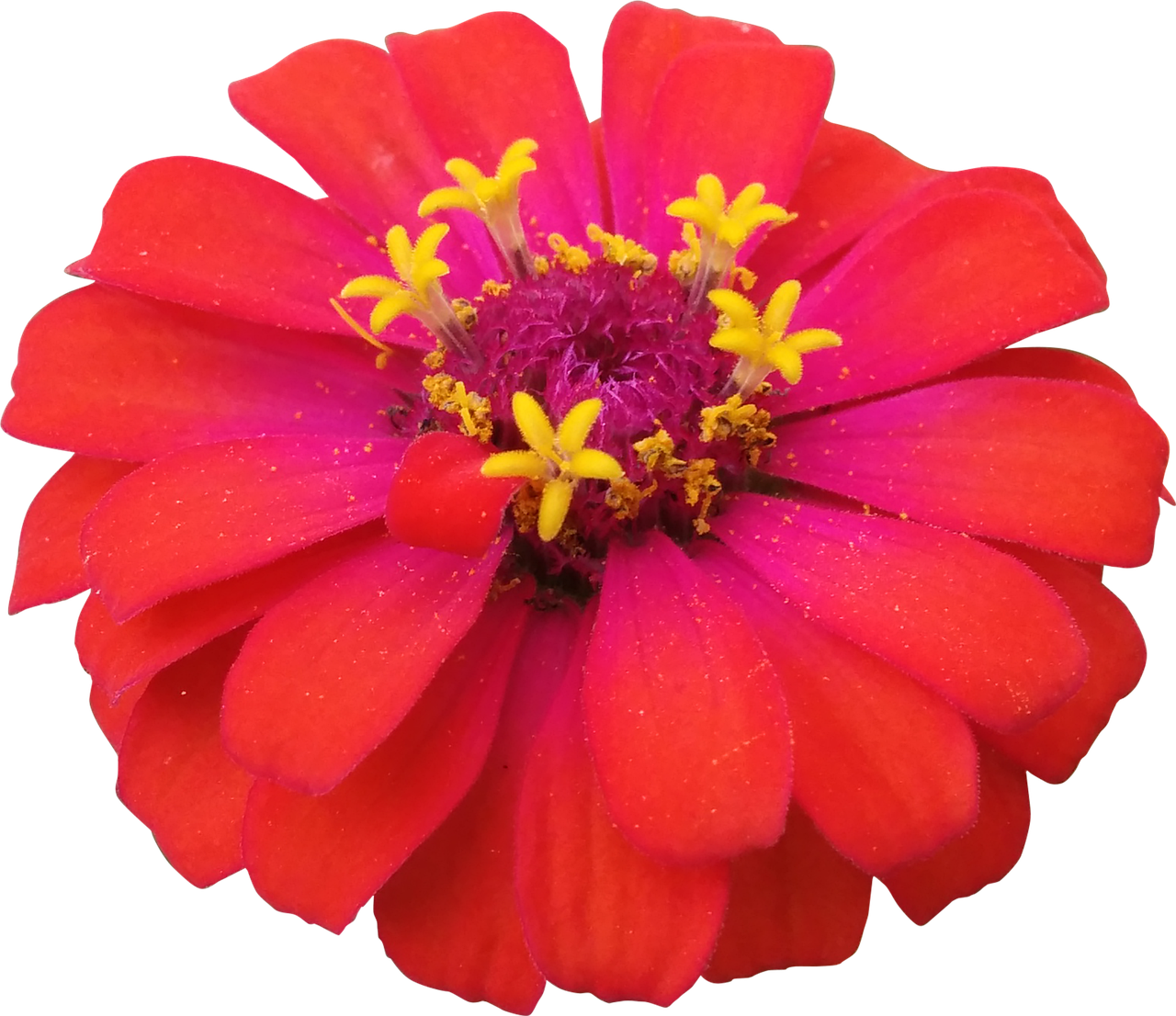
Choosing the Right Zinnia Varieties
When it comes to zinnias, the choices can feel as vibrant and varied as the flowers themselves! These stunning blooms come in an array of colors, shapes, and sizes, making them a favorite among gardeners and floral enthusiasts alike. But how do you choose the right zinnia variety for your garden or floral arrangements? Well, let’s dive into the delightful world of zinnias and explore some of the most popular varieties you might consider.
First off, it's important to recognize that zinnias are categorized into different groups based on their flower shape and size. The most common types are:
- Giant Zinnias: These can grow up to 3 feet tall and produce large blooms that can reach 4 inches in diameter. They're perfect for making a bold statement in your garden.
- Medium Zinnias: Ranging from 1 to 2 feet tall, these zinnias offer a balance between size and manageability, making them ideal for both gardens and containers.
- Dwarf Zinnias: Perfect for smaller spaces or borders, dwarf zinnias typically grow to about 6 to 12 inches tall, showcasing compact blooms that are just as colorful as their taller counterparts.
Now, let's talk about colors! Zinnias come in almost every color of the rainbow, from vibrant reds and yellows to soft pastels and even bi-colored varieties. This diversity allows you to create stunning visual displays in your garden or home. For instance, if you're aiming for a cheerful and sunny vibe, consider planting a mix of yellow and orange zinnias. On the other hand, if you prefer a more subdued palette, pastel pinks and whites can create a serene atmosphere.
When selecting zinnias, you should also consider their intended use. Are you looking to fill your garden with lively blooms, or do you want to create beautiful floral arrangements for your home? For garden beds, you might want to opt for taller varieties that can act as a backdrop, while shorter types can be used as colorful borders. If you're into crafting arrangements, look for varieties that maintain their shape and color when cut. Some popular choices for cutting include the 'Benary's Giant' series, known for their large, sturdy blooms, and 'State Fair' zinnias, which are loved for their vibrant colors and impressive size.
To help you make an informed choice, here’s a quick comparison table of some popular zinnia varieties:
| Variety Name | Height | Bloom Size | Color Range |
|---|---|---|---|
| Benary's Giant | 2-3 ft | 4-5 in | Wide range of colors |
| State Fair | 2-3 ft | 4-6 in | Bright reds, oranges, yellows |
| Thumbelina | 6-12 in | 2-3 in | Pastels and bright colors |
| Cut and Come Again | 1-2 ft | 2-4 in | Varied colors |
Ultimately, the best zinnia variety for you will depend on your personal preferences and gardening goals. Whether you're aiming for a dazzling display in your garden or creating stunning arrangements for your home, zinnias offer endless possibilities. So, roll up your sleeves, get your hands in the dirt, and start exploring the colorful world of zinnias!
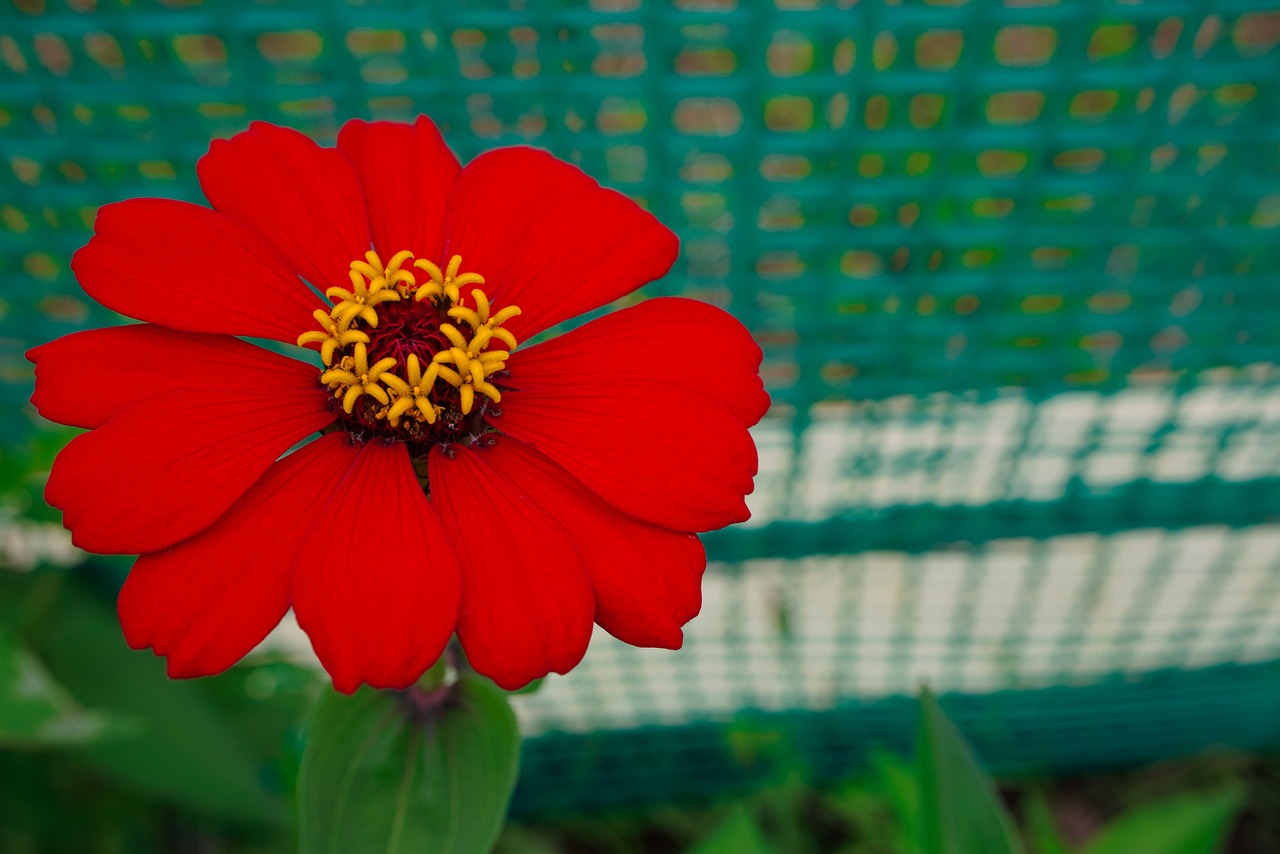
Optimal Growing Conditions
When it comes to growing zinnias, understanding their optimal growing conditions is paramount. These vibrant flowers thrive in a variety of environments, but there are specific factors that can enhance their growth and ensure that you enjoy a spectacular display of color throughout the blooming season. First and foremost, zinnias love sunlight. Ideally, they should receive at least 6 to 8 hours of direct sunlight each day. This exposure not only helps them grow tall and strong but also encourages the production of those stunning, vibrant blooms that we all adore.
Next up is the soil. Zinnias prefer well-drained soil that is rich in organic matter. A sandy loam is often considered the best type of soil for these flowers, as it allows for proper drainage while retaining enough moisture for the plants to thrive. Before planting, it’s a good idea to enrich your soil with compost or well-rotted manure. This not only improves the soil structure but also provides essential nutrients that zinnias need to flourish. You can create a nutrient-rich foundation by mixing in a layer of compost, which brings us to our next point: soil preparation techniques.
Proper soil preparation is essential for zinnia health. Start by testing your soil's pH level, as zinnias prefer a slightly acidic to neutral pH, ideally between 6.0 and 7.0. If your soil is too acidic or alkaline, you can amend it with lime or sulfur to reach the desired pH. Additionally, consider adding organic matter to improve the soil's nutrient content. This can be done by incorporating compost or aged manure into the top few inches of soil. The benefits of this practice are twofold: it enhances soil structure and provides a steady supply of nutrients as the organic matter breaks down.
Utilizing compost can significantly enhance soil quality. Composting not only recycles kitchen and garden waste but also creates a nutrient-rich mix that zinnias adore. You can make your own compost by collecting vegetable scraps, grass clippings, and dried leaves. Over time, these materials decompose into a rich, dark substance that can be mixed into your garden beds. Applying a layer of compost around your zinnias can also help retain moisture and suppress weeds, making it a win-win situation for your garden.
Understanding soil pH is vital for zinnia growth. You can easily test your soil's pH using a home testing kit, which is widely available at garden centers. If your soil is too acidic, adding lime can help raise the pH, while sulfur can lower it if the soil is too alkaline. By ensuring your soil is within the optimal pH range, you’ll maximize nutrient availability, allowing your zinnias to absorb what they need for robust growth.
Effective watering and fertilization strategies are key to robust zinnia plants. Zinnias prefer to be watered deeply but infrequently, which encourages deep root growth. Aim for about 1 inch of water per week, adjusting based on rainfall. It's best to water in the early morning to minimize evaporation and prevent fungal diseases. When it comes to fertilization, a balanced, slow-release fertilizer applied at planting time can work wonders. Just remember that too much fertilizer can lead to lush foliage at the expense of blooms, so moderation is key.
- How often should I water my zinnias? Water deeply once a week, adjusting based on weather conditions.
- What type of soil do zinnias prefer? Zinnias thrive in well-drained, nutrient-rich soil, ideally sandy loam.
- Can zinnias grow in partial shade? While they can tolerate partial shade, full sun is best for vibrant blooms.
- How do I know if my soil pH is suitable for zinnias? Test your soil using a home kit; aim for a pH between 6.0 and 7.0.
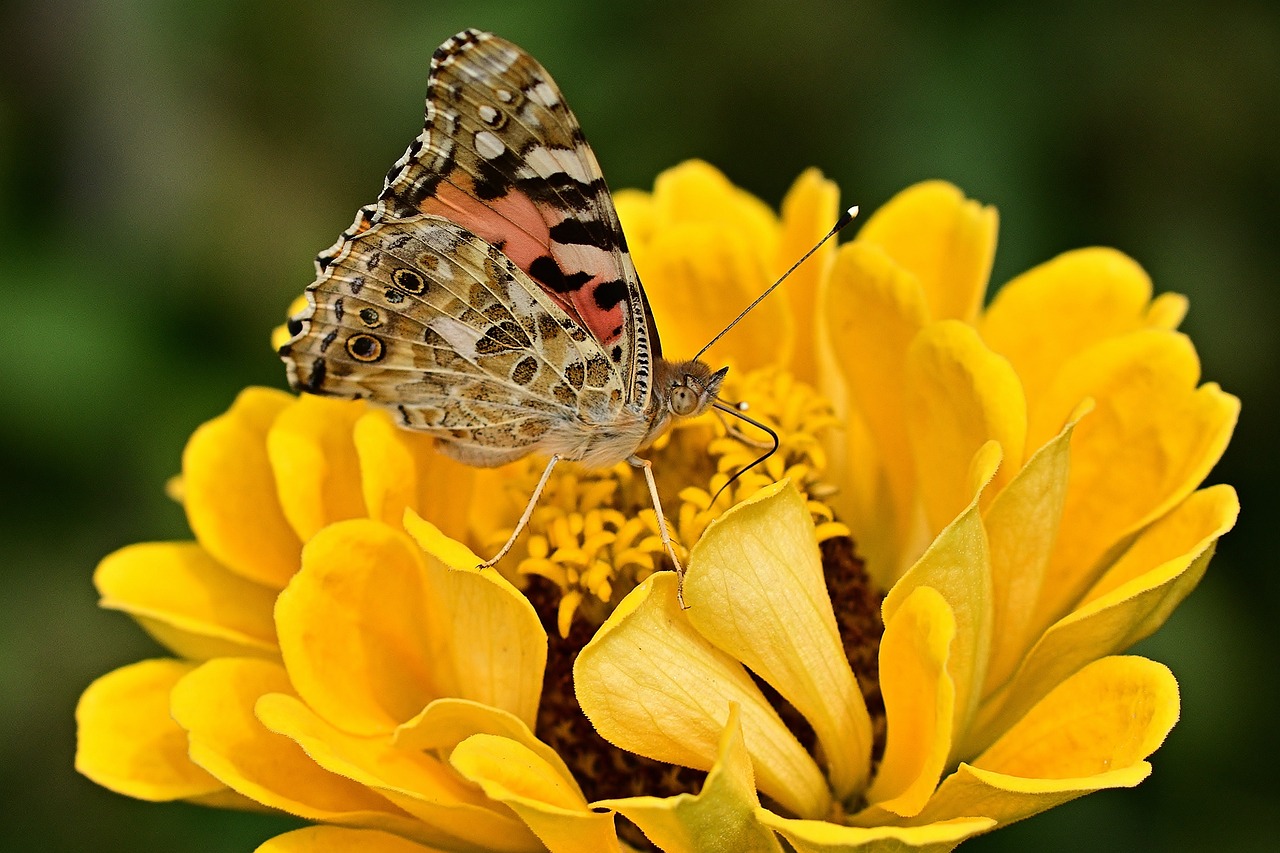
Soil Preparation Techniques
When it comes to growing healthy zinnias, soil preparation is the unsung hero of the gardening process. Imagine your zinnias as a beautiful painting; the soil is the canvas that supports and enhances the vibrant colors. To ensure your zinnias thrive, you need to create a nutrient-rich environment that promotes robust growth and stunning blooms. Start by testing your soil to understand its current state. You can purchase a soil testing kit at your local garden center or send a sample to a lab. This step is crucial because it reveals the pH level and nutrient content, giving you a roadmap for improvements.
Once you have your soil test results, it’s time to get your hands dirty. If your soil is too compacted, consider using a garden fork or tiller to aerate it. This process not only improves drainage but also allows roots to penetrate deeper, accessing essential nutrients. Additionally, you might want to incorporate organic matter, such as compost or well-rotted manure, into your soil. These amendments enrich the soil, enhance moisture retention, and provide a slow release of nutrients that zinnias crave.
Now, let’s talk about drainage. Zinnias prefer well-drained soil to prevent root rot, so if your garden has heavy clay, you might want to consider adding sand or perlite to improve drainage. A simple mix could look like this:
| Soil Component | Proportion |
|---|---|
| Garden Soil | 50% |
| Compost | 30% |
| Sand or Perlite | 20% |
Once your soil is adequately mixed and prepared, you should also consider the pH level. Zinnias thrive in a slightly acidic to neutral pH range of 6.0 to 7.0. If your soil is too acidic, you can raise the pH by adding lime; if it’s too alkaline, sulfur can help lower it. Regularly checking and adjusting the pH ensures that your zinnias can absorb nutrients effectively, leading to healthier plants.
In summary, investing time in soil preparation is like laying a strong foundation for a house; it supports everything that grows above it. By testing your soil, incorporating organic matter, ensuring proper drainage, and adjusting pH levels, you set the stage for your zinnias to flourish. So roll up your sleeves and get ready to create the perfect home for your zinnias!
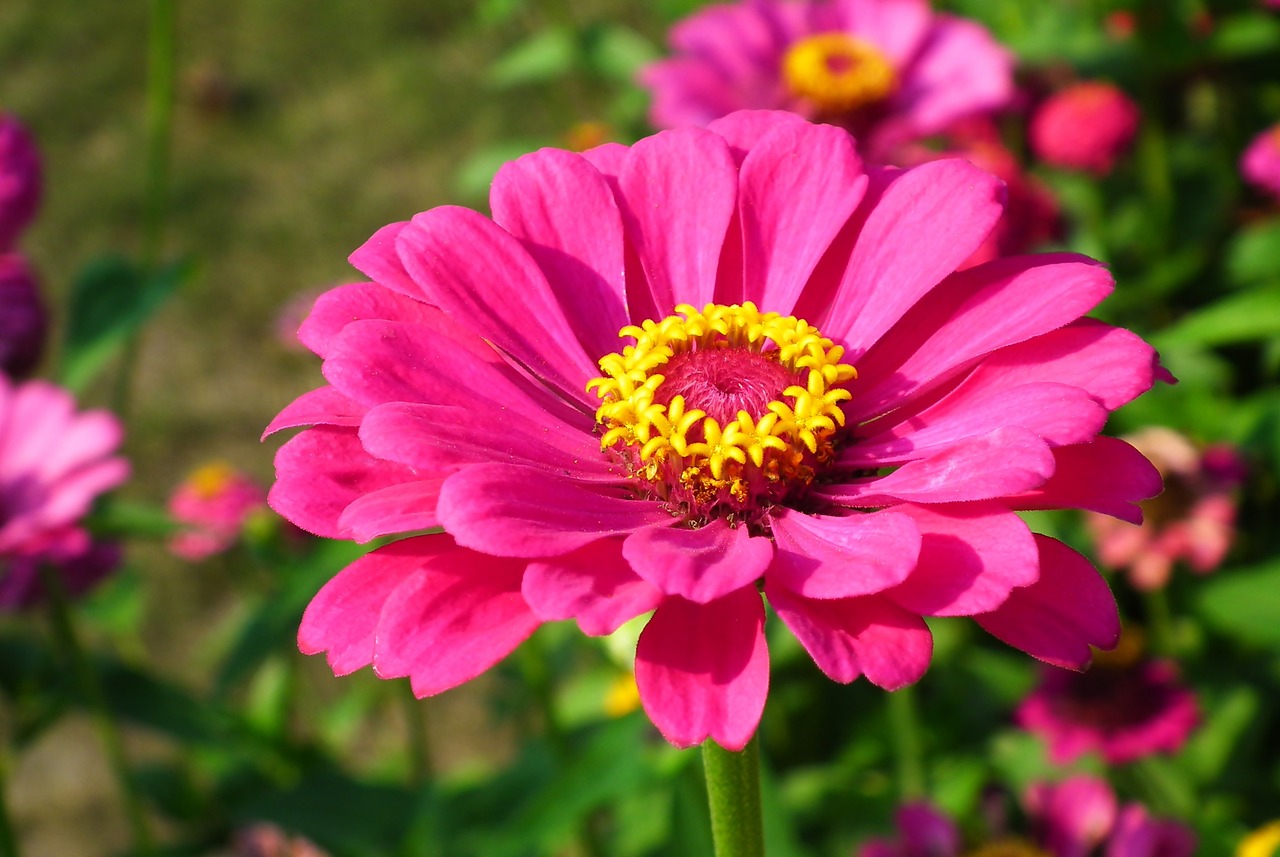
Composting for Zinnias
When it comes to growing zinnias, one of the most effective ways to ensure they thrive is through the power of composting. Composting is not just a trend; it's a sustainable practice that enriches your soil, enhances plant health, and promotes vibrant blooms. Think of compost as a secret potion that transforms ordinary soil into a nutrient-rich haven for your zinnias. But how do you get started? Let's dive into the world of composting!
First off, composting involves the breakdown of organic materials into a dark, crumbly substance that is packed with nutrients. This can include kitchen scraps like vegetable peels, coffee grounds, and eggshells, as well as yard waste like grass clippings and leaves. When these materials decompose, they create a rich, fertile environment that zinnias absolutely love. By incorporating compost into your garden, you're essentially giving your zinnias a buffet of nutrients that will help them grow strong and colorful.
Creating your own compost is not only beneficial for your plants but also a fantastic way to reduce waste. You can easily set up a compost bin in your backyard or even use a simple pile in a corner of your garden. Just remember to balance green materials (like fresh grass clippings) with brown materials (like dried leaves) to achieve the best results. A good rule of thumb is to maintain a ratio of about 2:1 of brown to green materials. This balance helps to aerate the pile and speed up the decomposition process.
Once your compost is ready, which usually takes a few months, you can mix it into your soil before planting your zinnias. This will not only improve soil structure but also enhance moisture retention and drainage, ensuring that your flowers have the best possible environment to flourish. You might be wondering how much compost to use—generally, a layer of about 2-3 inches of compost mixed into the top few inches of soil is ideal. However, if you're planting zinnias in containers, a mix of one part compost to three parts potting soil works wonders!
In addition to improving soil quality, composting also helps to suppress weeds and reduce the need for chemical fertilizers. This means less work for you and a healthier garden overall. Plus, it’s a great way to keep your gardening practices eco-friendly! So, if you’re looking for a way to give your zinnias the best shot at thriving, composting is definitely the way to go.
In summary, composting is a simple yet powerful tool in your gardening arsenal. By enriching your soil with homemade compost, you’re setting the stage for a vibrant and flourishing zinnia garden. So, roll up your sleeves, start composting, and watch your zinnias burst into color!
- How long does it take for compost to be ready? Compost typically takes about 2 to 6 months to fully decompose, depending on the materials used and the conditions in your compost bin.
- Can I use compost from store-bought sources? Yes, store-bought compost can be a great option, but make sure it's organic and free from chemicals that could harm your plants.
- What materials should I avoid in my compost? Avoid adding meat, dairy, and oils to your compost as they can attract pests and create odors.
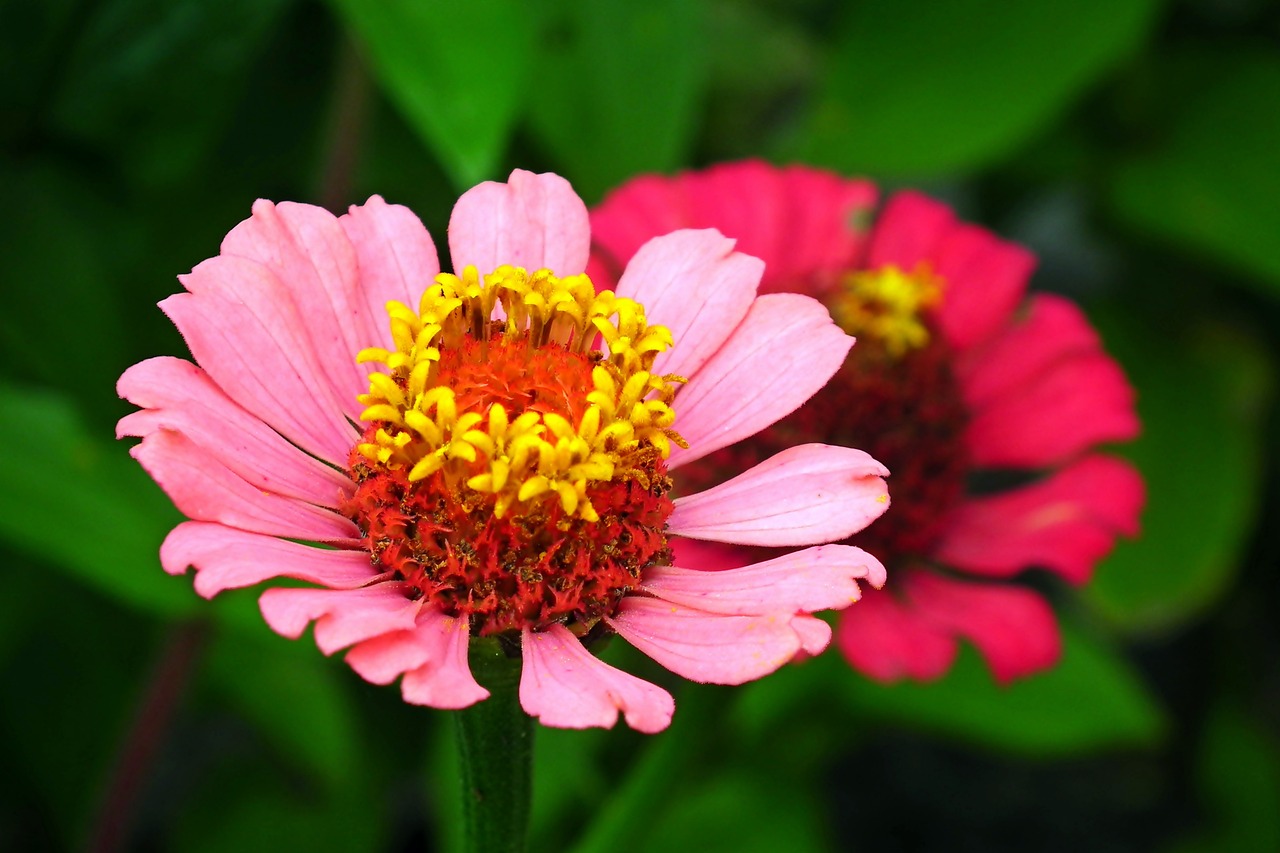
pH Levels and Zinnias
Understanding soil pH is crucial for the successful growth of your zinnias. The pH level of the soil affects the availability of nutrients that your plants need to thrive. Ideally, zinnias prefer a soil pH range of 6.0 to 7.0. Within this range, nutrients are most accessible, allowing your zinnias to reach their full potential in terms of growth and blooming vibrancy.
To ensure your zinnias are growing in optimal conditions, it’s essential to regularly test your soil’s pH. You can easily do this with a soil test kit, which is available at most gardening centers. Once you have your results, you may find that adjustments are necessary. If your soil is too acidic (below 6.0), you can add lime to raise the pH. Conversely, if your soil is too alkaline (above 7.0), you can introduce sulfur or organic matter to lower the pH.
Here’s a quick guide to adjusting soil pH:
- Too Acidic (pH < 6.0): Add lime (calcium carbonate) to increase pH.
- Too Alkaline (pH > 7.0): Add sulfur or compost to decrease pH.
It’s important to make these adjustments gradually. Sudden changes can shock your plants and hinder their growth. After making amendments, retest the soil after a few weeks to see if you achieved the desired pH level. Remember, healthy zinnias are not just about the right amount of sunlight and water; they also need the right soil chemistry to flourish!
In summary, paying attention to pH levels is a small but significant step in cultivating stunning zinnias. By ensuring your soil is within the ideal pH range, you’re setting the stage for vibrant blooms and robust plants that can brighten any garden.
Q1: How often should I test my soil’s pH for zinnias?
A1: It’s a good practice to test your soil pH at least once a year, ideally before planting season, to ensure your zinnias have the best growing conditions.
Q2: Can I use household items to adjust soil pH?
A2: Yes, you can use household items like vinegar to lower pH (for alkaline soils) and baking soda to raise pH (for acidic soils). However, these methods may not be as effective as commercial products.
Q3: What are the signs of pH imbalance in zinnias?
A3: Signs of pH imbalance include poor growth, yellowing leaves, and reduced flowering. If you notice these symptoms, it may be time to test your soil’s pH.
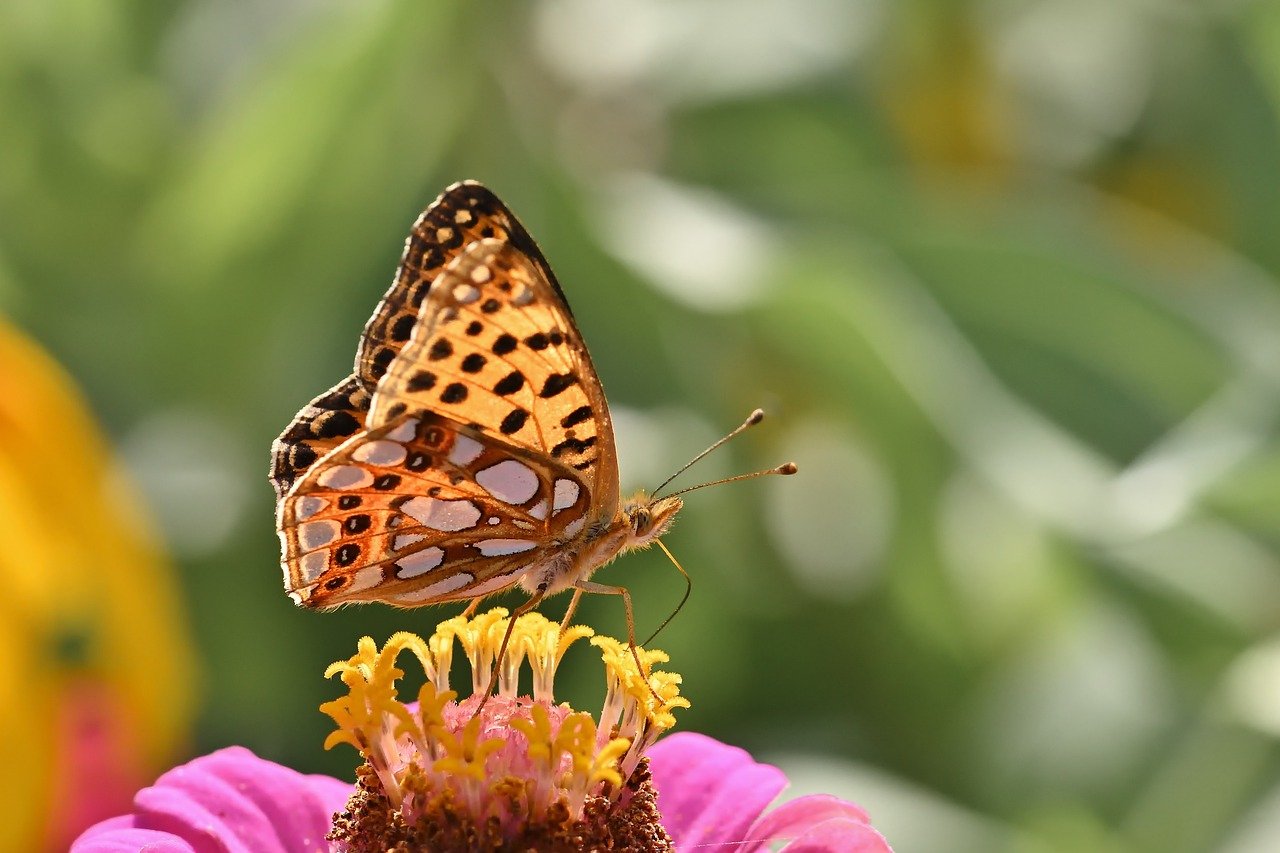
Watering and Fertilization Best Practices
When it comes to cultivating vibrant zinnias, understanding the nuances of watering and fertilization is crucial. These beautiful flowers thrive with the right balance of moisture and nutrients, making it essential to develop a routine that caters to their specific needs. So, how do you ensure your zinnias receive the care they deserve? Let's dive into the best practices that will help your flowers flourish.
First and foremost, watering should be approached with a keen eye on the weather and the soil's moisture levels. Zinnias prefer consistently moist but not soggy soil. A good rule of thumb is to water deeply once a week, allowing the soil to dry out slightly between waterings. This encourages the roots to grow deeper, making the plants more resilient. During particularly hot or dry spells, you might need to increase the frequency of watering. Always check the soil by sticking your finger about an inch deep; if it feels dry, it’s time to water.
Another important aspect is the method of watering. It’s best to use a soaker hose or drip irrigation system, as these methods deliver water directly to the roots without wetting the foliage. This not only conserves water but also helps prevent fungal diseases that can arise from wet leaves. If you must use a sprinkler, try to water early in the morning to allow the plants to dry out during the day.
Now, let's talk about fertilization. Zinnias are not heavy feeders, but they do appreciate a little boost from time to time. A balanced, slow-release fertilizer applied at the beginning of the growing season can set them up for success. Look for fertilizers with an N-P-K ratio of 10-10-10 or similar. After the initial application, you can supplement with a liquid fertilizer every four to six weeks during the growing season to promote healthy growth and vibrant blooms.
It's also wise to be cautious with fertilization. Over-fertilizing can lead to excessive foliage growth at the expense of flowers. A well-balanced approach is key. If you're unsure about the nutrient levels in your soil, consider conducting a soil test. This will provide valuable insights into what your zinnias might be lacking. Based on the results, you can adjust your fertilization strategy accordingly.
To summarize, here are the key practices for watering and fertilizing zinnias:
- Water deeply once a week, allowing soil to dry slightly between waterings.
- Use soaker hoses or drip irrigation to minimize leaf wetness.
- Apply a balanced, slow-release fertilizer at the start of the season.
- Supplement with liquid fertilizer every 4-6 weeks.
- Conduct a soil test to tailor your fertilization approach.
By adhering to these best practices, your zinnias will not only survive but thrive, showcasing a stunning array of colors and blooms that will brighten up any garden or home. Remember, nurturing these flowers is like nurturing a friendship; it requires attention, care, and a little bit of love!
As we wrap up this guide, you might have a few lingering questions about zinnia care. Here are some of the most frequently asked questions:
- How often should I water my zinnias? - Water deeply once a week, more often in hot weather.
- What type of fertilizer is best for zinnias? - A balanced, slow-release fertilizer with an N-P-K ratio of 10-10-10 is ideal.
- Can zinnias grow in poor soil? - While they can tolerate poorer soil, amending it with compost will promote better growth.
- Do I need to deadhead my zinnias? - Yes! Regular deadheading encourages more blooms and keeps your plants looking tidy.
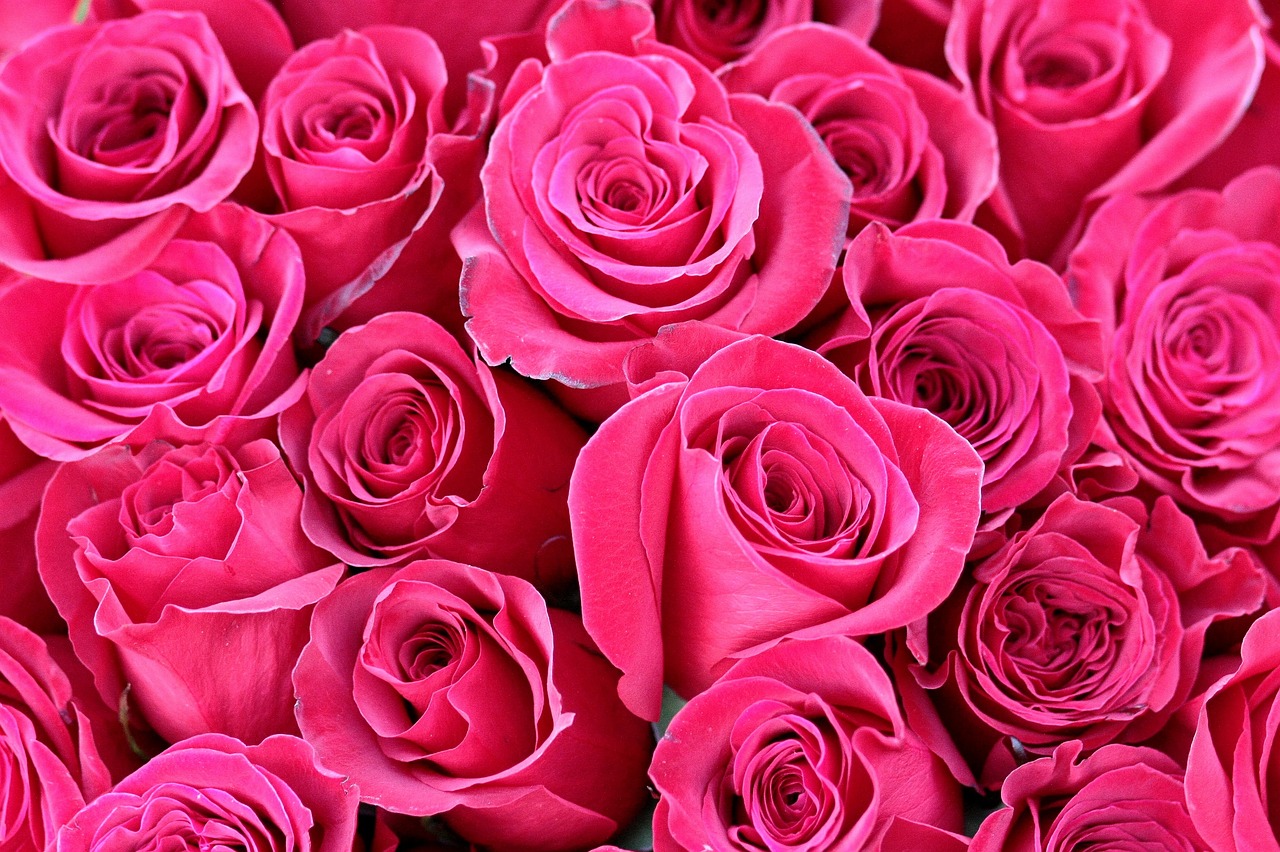
Creative Decorating Ideas with Zinnias
When it comes to adding a splash of color and vibrancy to your home and garden, zinnias are the perfect choice! These cheerful flowers are not only easy to grow, but they also offer endless possibilities for creative decorating. Imagine walking into a room filled with the bright hues of zinnias, or stepping into a garden where these beauties create a stunning visual impact. Let’s dive into some imaginative ways to incorporate zinnias into your decor, both indoors and outdoors!
One of the most delightful ways to showcase zinnias is through floral arrangements. Whether you're hosting a dinner party or simply want to brighten your living room, zinnias can elevate your space effortlessly. Start by selecting a variety of zinnias in different colors and sizes. Mixing bold reds with soft pinks and sunny yellows can create a stunning contrast that grabs attention. Use a simple vase to let the flowers shine, or opt for a decorative container that complements your home’s style. Remember, the key to a beautiful arrangement is to vary the heights and shapes of the flowers. This creates depth and interest, making your zinnias a true centerpiece!
For those looking to take their zinnia decorating to the next level, consider creating a zinnia wall. This innovative idea can transform any dull wall into a vibrant focal point. Start by attaching a trellis or a grid to your wall, and then plant zinnias in pots that can be hung or placed on shelves. As the flowers grow, they will cascade and cover the wall with color. This not only adds beauty but also brings a touch of nature indoors, creating a refreshing atmosphere. Imagine the joy of having a living wall filled with the bright blooms of zinnias right in your home!
Additionally, zinnias can be used to enhance your outdoor spaces. Think about creating a zinnia border along pathways or garden beds. Their vibrant colors can guide the eye and create a cheerful ambiance. You can also plant zinnias in clusters to form a colorful backdrop for your other garden plants. This not only adds visual interest but also attracts pollinators, making your garden more lively. Another fantastic idea is to create a zinnia bouquet for your outdoor dining table. Place freshly cut zinnias in a rustic jar or a whimsical pitcher to set a warm and inviting tone for outdoor gatherings.
Don't forget about using zinnias in seasonal decorations. As the seasons change, so can your zinnia displays! During the summer, use zinnias in bright, bold arrangements. As fall approaches, consider dried zinnias mixed with other fall foliage for a rustic look. You can even create zinnia wreaths that can be hung on doors or walls, providing a warm welcome to your guests. The versatility of zinnias makes them a perfect choice for any occasion!
Lastly, if you're feeling particularly crafty, consider making zinnia-themed artwork. Pressed zinnias can be transformed into beautiful wall art or used in handmade cards. This not only allows you to enjoy their beauty long after they’ve faded but also adds a personal touch to your decor. Plus, it’s a fun activity that you can do with family and friends!
In conclusion, zinnias are more than just flowers; they are a vibrant way to express your creativity and enhance your living spaces. Whether you choose to create stunning floral arrangements, design a zinnia wall, or incorporate them into your outdoor decor, these flowers will surely bring joy and color to your life. So, why not start planting and decorating with zinnias today? You’ll be amazed at the transformation they can bring!
- How often should I water my zinnias? Zinnias prefer to be watered deeply but infrequently. Aim for about once a week, depending on your climate.
- Can zinnias grow in pots? Yes, zinnias can thrive in pots! Just ensure the pot has good drainage and is large enough to accommodate their root system.
- What are the best colors of zinnias for arrangements? Bright colors like red, orange, and yellow are popular for arrangements, but pastel shades can add a soft touch as well.
- When is the best time to plant zinnias? Zinnias should be planted after the last frost in spring, as they thrive in warm weather.
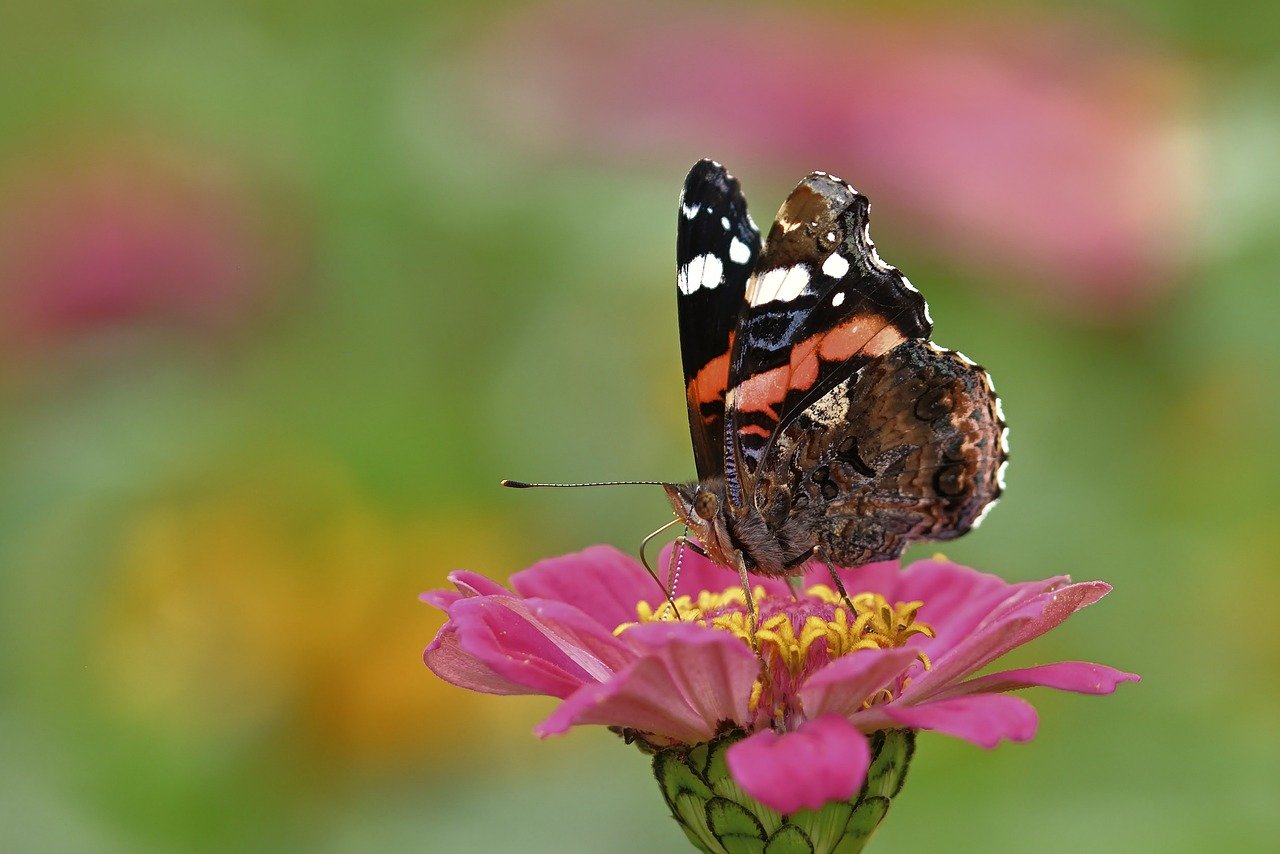
Floral Arrangements
Creating stunning floral arrangements with zinnias can truly brighten any space, adding a splash of color and a touch of nature's beauty to your home. These vibrant flowers, with their bold hues and varied sizes, are perfect for both casual and formal settings. Imagine walking into a room filled with the cheerful presence of zinnias, their lively colors instantly lifting your mood. From simple bouquets to elaborate centerpieces, zinnias offer endless possibilities for creativity.
When it comes to arranging zinnias, the first step is to choose a variety that complements your decor. For instance, if you have a modern aesthetic, opt for zinnias in solid colors like bright orange or deep red. On the other hand, if your style leans more towards vintage, consider mixing pastel shades like soft pinks and yellows. The contrast in colors can create a stunning visual effect that draws the eye and sparks conversation.
One effective technique to enhance your floral arrangements is to mix zinnias with other flowers and greenery. This not only adds depth but also creates a more dynamic look. For example, pairing zinnias with white daisies or lush green ferns can help to highlight their vibrant colors. Remember, the key is to maintain balance; too many colors can overwhelm the arrangement, while too few can make it look sparse. A well-thought-out combination can elevate your floral display from ordinary to extraordinary.
Consider the height and shape of your arrangement as well. Tall zinnias can serve as the focal point in a vase, while shorter varieties can fill in the gaps. You can create a layered effect by placing taller flowers in the center and surrounding them with shorter blooms. This technique not only adds dimension but also creates a sense of harmony within your arrangement.
Don't forget about the vase! The container you choose can significantly impact the overall look of your floral arrangement. A rustic mason jar can give a casual vibe, while a sleek glass vase can add elegance. Make sure the vase complements the colors of your zinnias and the overall theme of your decor. After all, the right vase can be the cherry on top of your stunning creation.
Finally, maintaining the freshness of your zinnias is crucial for keeping your arrangements looking vibrant. Here are some quick tips to ensure your zinnias stay stunning:
- Change the water every few days to prevent bacteria growth.
- Trim the stems at an angle before placing them in water.
- Remove any leaves that will be submerged in water to avoid rot.
By following these simple guidelines, you can enjoy the beauty of zinnias in your home for longer periods. So, gather your zinnias, unleash your creativity, and let your floral arrangements reflect your unique style and personality!
Q: How long do zinnias last in a floral arrangement?
A: Zinnias can last anywhere from 5 to 14 days in a floral arrangement, depending on how well they are cared for.
Q: Can zinnias be mixed with other flowers?
A: Absolutely! Zinnias pair beautifully with a variety of other flowers, enhancing the overall aesthetic of your arrangement.
Q: What is the best way to keep zinnias fresh in arrangements?
A: Change the water regularly, trim the stems, and remove any submerged leaves to keep zinnias fresh and vibrant.
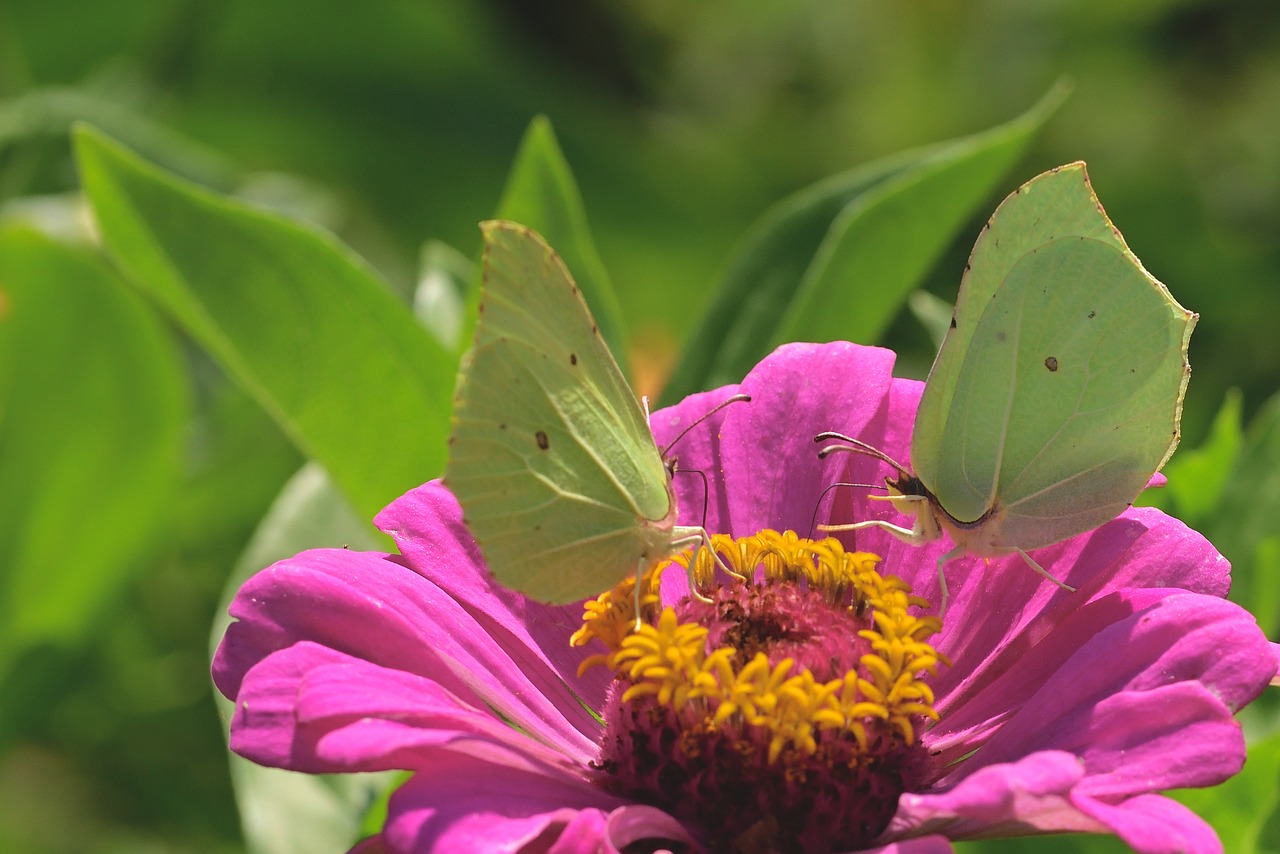
Outdoor Garden Design
When it comes to , zinnias are like the cherry on top of a beautifully crafted cake. Their vibrant colors and varied heights can transform any garden into a stunning visual feast. Imagine walking into your backyard and being greeted by a kaleidoscope of colors—this is the magic zinnias bring! They not only add beauty but also attract pollinators, making your garden a lively ecosystem.
To make the most of zinnias in your garden, consider creating themed garden beds. For example, you could design a color-themed bed where you plant zinnias in shades of red, orange, and yellow to create a warm, inviting atmosphere. Alternatively, a pastel-themed garden with soft pinks, whites, and lavenders can evoke a serene, tranquil vibe. Pairing zinnias with other complementary plants can also enhance their beauty. Think about mixing them with marigolds or cosmos for a lush, layered look.
Another creative idea is to utilize zinnias in a border design. Planting zinnias along the edges of walkways or garden beds can create a vibrant frame that draws the eye and guides visitors through your space. Additionally, consider varying the heights of zinnias to add depth. Taller varieties like the 'Benary's Giant' can stand at the back of a flower bed, while shorter ones like 'Thumbelina' can fill in the front, creating a beautiful gradient effect.
Don't forget about containers! Zinnias thrive in pots, making them perfect for patios or balconies. You can mix different varieties in a single container for a striking display. Just ensure that the pots have good drainage, as zinnias prefer well-drained soil. Grouping containers of zinnias with other flowering plants or ornamental grasses can create an eye-catching arrangement that enhances your outdoor space.
Lastly, consider the seasons. Zinnias bloom from summer until the first frost, so think about how you can extend the visual appeal of your garden. Incorporate evergreen plants or perennials that bloom in spring or fall to ensure that your garden remains lively throughout the year. By planning ahead, you can create a garden that is not only beautiful but also dynamic and engaging.
- How do I care for zinnias in my garden? Zinnias require full sun, well-drained soil, and regular watering. Deadheading spent blooms will encourage more flowers to grow.
- Can zinnias grow in pots? Absolutely! Zinnias thrive in containers as long as they have enough sunlight and proper drainage.
- What are the best companion plants for zinnias? Good companions include marigolds, cosmos, and sunflowers, as they can enhance the beauty and health of your zinnias.
Frequently Asked Questions
- What are the best zinnia varieties for beginners?
If you're just starting out, consider varieties like the Cut and Come Again or State Fair. These are not only easy to grow but also produce vibrant blooms that can last all season long. Plus, they come in a range of colors that can brighten up any garden!
- How much sunlight do zinnias need?
Zinnias thrive in full sunlight, so aim for at least 6 to 8 hours of direct sun each day. This helps them grow tall and strong, producing those stunning flowers you love. Think of it like giving them a sunbath – the more they soak it up, the happier they are!
- How do I prepare the soil for planting zinnias?
Start by loosening the soil to a depth of about 12 inches and mix in some organic matter, like compost. This not only improves drainage but also provides essential nutrients. It’s like giving your zinnias a cozy bed to grow in!
- What is the ideal pH level for zinnias?
Zinnias prefer a soil pH between 6.0 and 7.0. You can easily test your soil with a pH kit from your local garden center. If it’s too acidic, adding lime can help, while sulfur can lower the pH if it’s too alkaline. Think of it as tuning a musical instrument – the right balance makes all the difference!
- How often should I water my zinnias?
Water zinnias deeply about once a week, or more frequently during hot spells. It’s better to give them a good soak rather than light sprinklings every day. This encourages deeper root growth, making them more resilient. Imagine it as a refreshing drink after a long run – they’ll thrive with that kind of hydration!
- Can I use zinnias in floral arrangements?
Absolutely! Zinnias are fantastic for floral arrangements due to their vibrant colors and sturdy stems. They can be the star of the show or mix beautifully with other flowers. Just remember to change the water regularly to keep them fresh – think of it as giving them a spa day!
- What are some creative ways to decorate with zinnias?
You can use zinnias in a variety of ways, from centerpieces to garden borders. Try placing them in mason jars for a rustic look or creating a colorful bouquet for your dining table. They can even be used to brighten up outdoor spaces by lining pathways or filling hanging baskets!



















